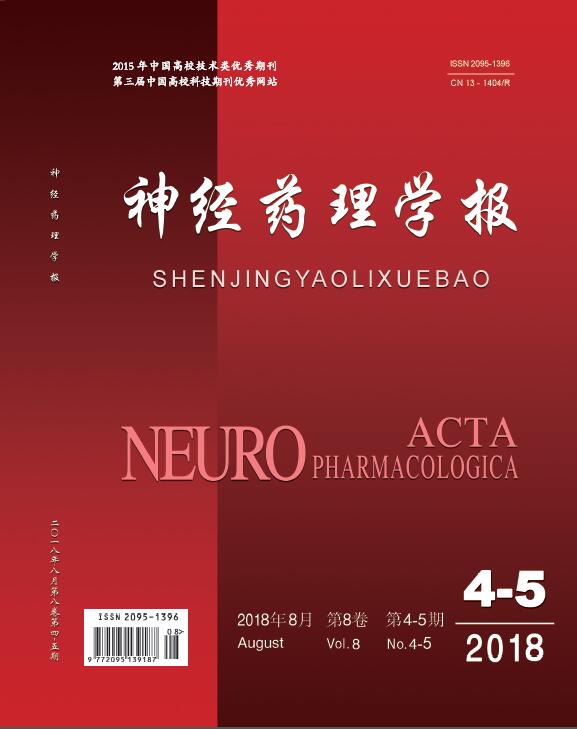|
|
A Study of Diagnosis and Early Efficacy Prediction Biomarkers for Major Depressive Disorder
YUAN Yong-gui
2018, 8 (4):
42-44.
Background: Currently, diagnosis of major depressive disorder (MDD) still relies on symptoms. There are some problems for the diagnostic criteria, like low diagnostic consistency and difficulty in differentiation of MDD and bipolar depression (BD) in the early stage. In terms of treatment, there are also many problems, such as low overall efficiency, slow onset effect, and large differences between individuals. At present, there are a lot of researches on MDD biomarkers, most focus on genomics, transcriptomics, proteomics and brain imaging both from domestic and foreign counterparts, but the main research focuses are genetics and imaging. This study is mainly combine genetics and imaging to conduct the discussions of MDD diagnosis and efficacy prediction biomarkers. Methods: Proteomics mainly included patients who met the diagnostic criteria. Blood samples were taken from the participants. Serum was collected after centrifugation for serum protein concentration detection. Receiver operation curve (ROC) analysis was used to test the diagnostic and differential powers of the single serum proteins or combined serum proteins. In the imageology groups, the 3.0T cranial magnetic resonance imaging (MRI) scan was performed on the subjects meeting the inclusion criteria, and the methods based on the deep learning of the resting-state fMRI data was used. The biological marker spectrums from molecular levels (genotyping or measuring genetic products) to clinical levels (depicting cognitive and motivational areas or clinical symptoms) to predict the outcome of the treatment. Results: In the diagnosis of MDD, accord to the results of previous animal experiments and clinical studies, we developed a highly accurate MDD diagnostic platform based on the serum levels of proteins in the P11-tPA-BDNF pathway. The sensitivity of the MDD diagnostic platform was 88.1%, specificity was 92.7%, and accuracy was as high as 90.6%. Based on the above findings, we further studied the diagnosis and differential diagnosis efficacy of serum proteins levels in this pathway for five common psychiatric diseases: schizophrenia (SZ), MDD, bipolar mania (BM), BD, and panic disorder (PD). The results suggest that the combination of serum proteins levels (tPA, PAI-1, BDNF, proBDNF, TrkB, p75NTR) in this pathway has a high accuracy not only in the diagnosis and differential diagnosis of MDD, but also in the diagnosis and identification of SZ, BM, BD and PD, which can be used as a diagnostic platform for common mental diseases. After that, we further studied serum VGF and BICC1 proteins upstream or downstream of this pathway. We found that serum VGF levels decreased in MDD while increased in BD patients compared with healthy controls (HC), had a significant ability for identifying MDD and BD, and its sensitivity is 95 %, specificity is 100%, and the accuracy is up to 95%. Similarly, BICC1 also has a good diagnostic and differential efficacy in MDD, BM, and BD. We also found that facial expressions also contribute to the diagnosis and severity of MDD. In addition, imaging studies also showed that MDD patients have characteristics of small-world networks that are different from other populations, showing an increase in the characteristic path length (Lp) and a decrease in network efficiency (E), which is beneficial to the diagnosis and differential diagnosis of MDD. In the efficacy of MDD, we found that CMHC differences are existed in the precuneus and infraorbital gyrus between responsive depression (RD) group and non-responding depression (NRD) group, and the precuneus VMHC values of RD group were significantly negatively associated with the baseline scores of Hamilton depression rating scale (HAMD). ROC analysis showed that combining the VMHC values of above-mentioned brain regions can distinguish NRD more effectively. Similarly, imaging studies also found that the left ORBsup node was lower than that of the HC group, while the right ORBinf was increased; right dorsolateral superior frontal gyrus (SFGdor) nodes are lower when compare to NRD that may be the basis for different therapeutic effects. The combined ROC analysis showed that the degree of right SFGdor node and the characteristic path length can predict NRD well. We also found that there are significant correlations between bilateral NAcc network connectivity property and the severity as well as early efficacy of MDD, and the temporal variability between different efficacy MDD groups is different. The bimodal analysis based on CBF+ALFF showed that ALFF values of the bilateral occipital gyrus (MOG), left lentiform nuclear (lentiform), right superior temporal gyrus, and CBF and ALFF of right calcarine gyrus (Calcarine) and left caudate nucleus (Caudate) are significantly correlated with the severity or early efficacy of MDD at baseline. Including CBF of left Caudate and right middle frontal gyrus as well as ALFF of right inferior temporal gyrus can predict NRD better. Conclusion: Both proteomics and imaging have the feasibility of developing an objective tool for the diagnosis and efficacy evaluation of MDD. In the future, larger samples of clinical studies are needed to obtain repeatable, scientific, and reliable specific biomarkers for the differential diagnosis of MDD and BD, and the precise clinical diagnosis and treatment of MDD.
Related Articles |
Metrics
|

